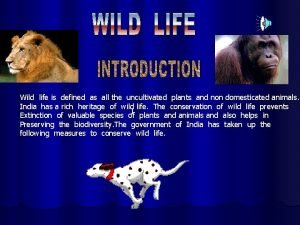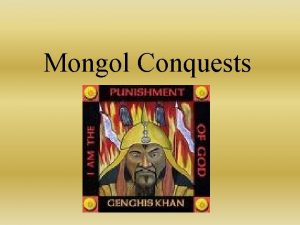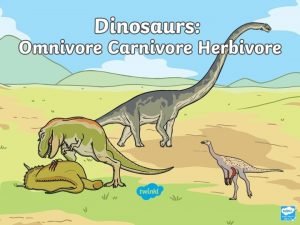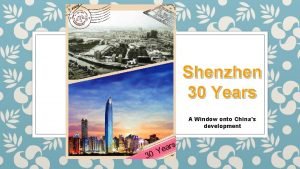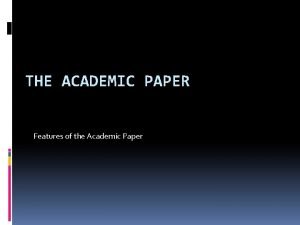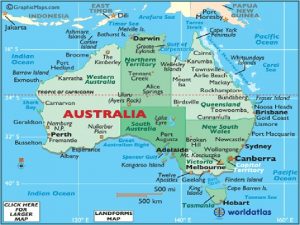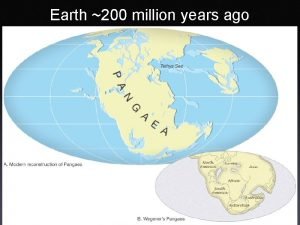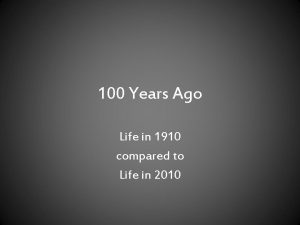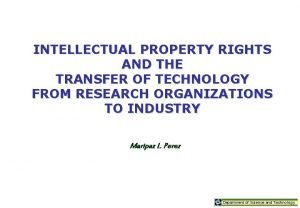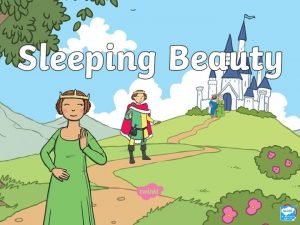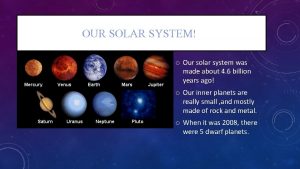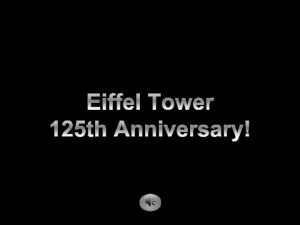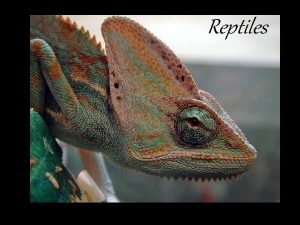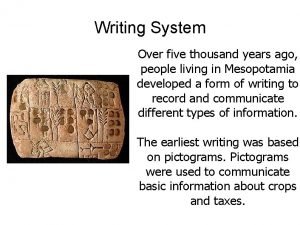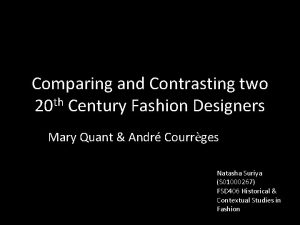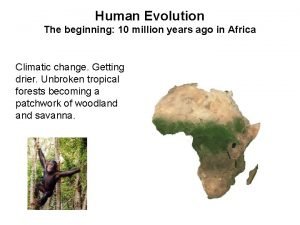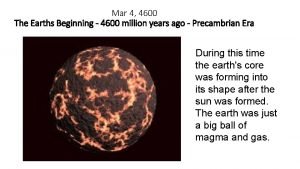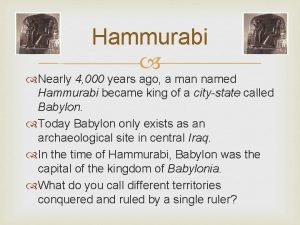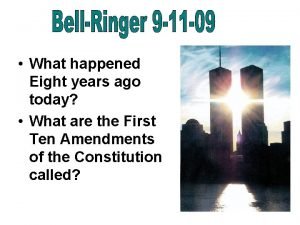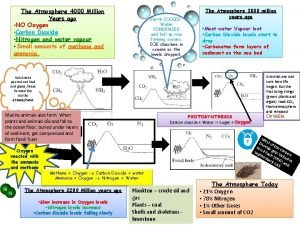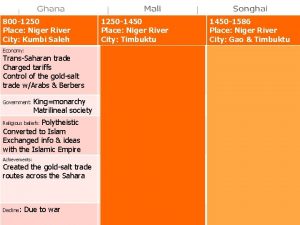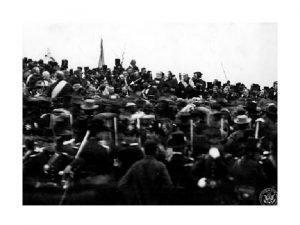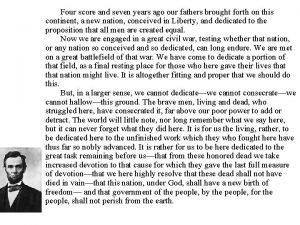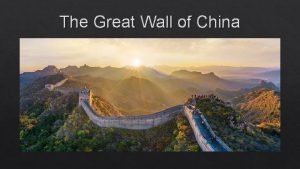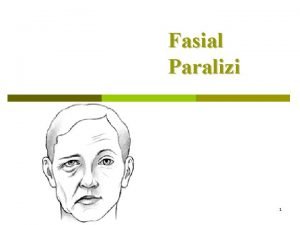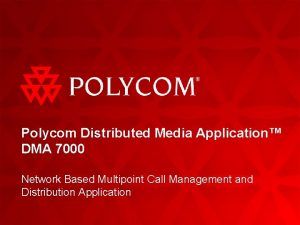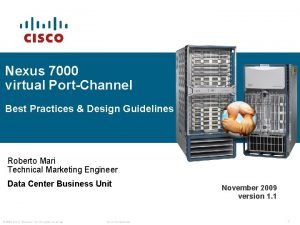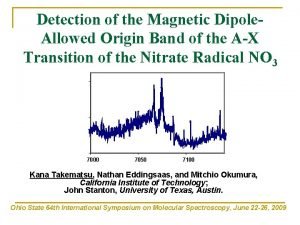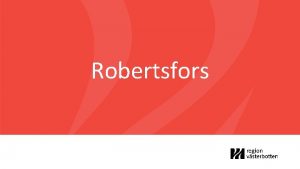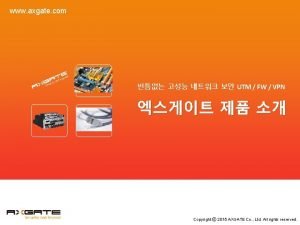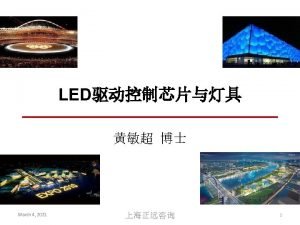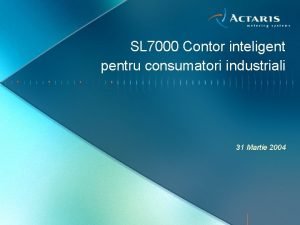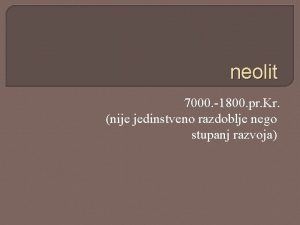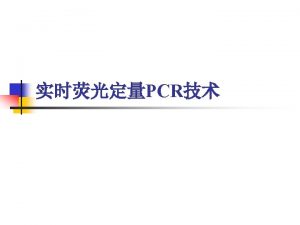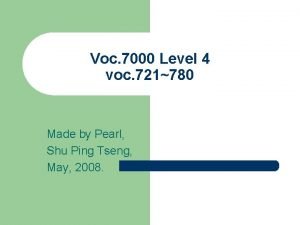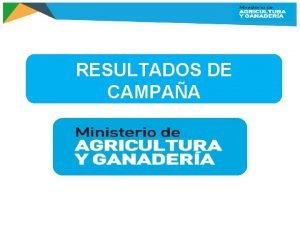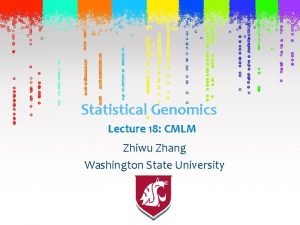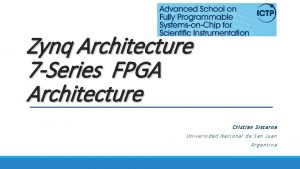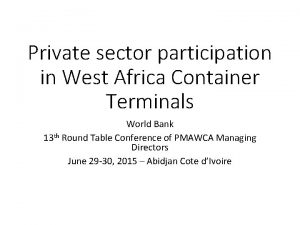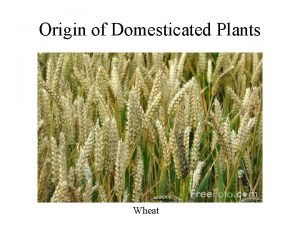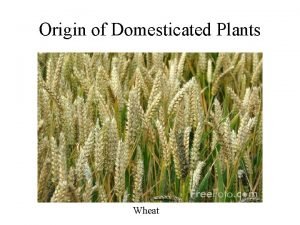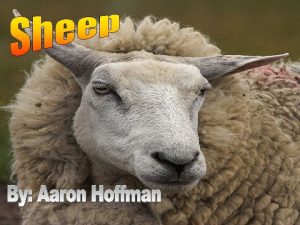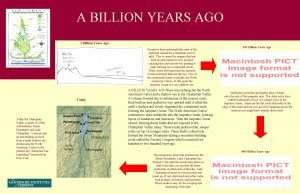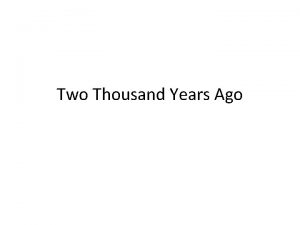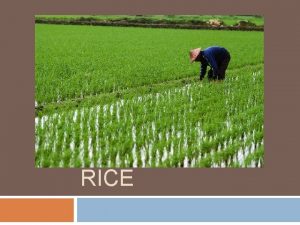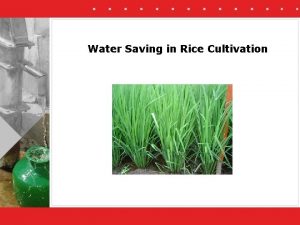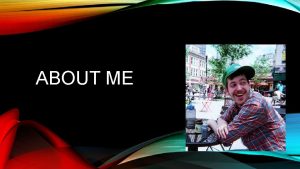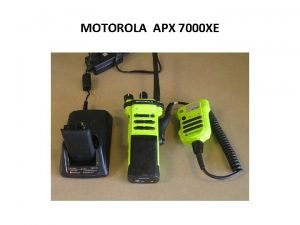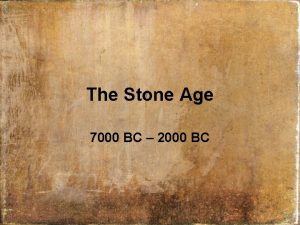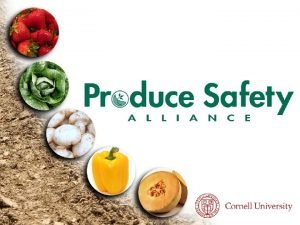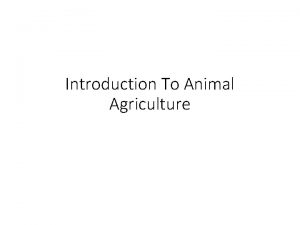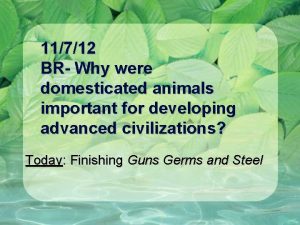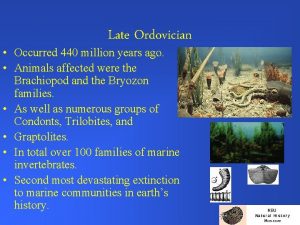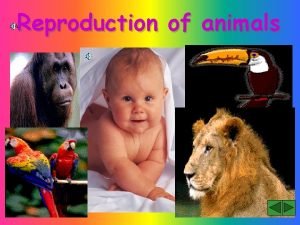China 7000 Years Ago Grew rice Domesticated animals





















































- Slides: 53

China

7000 Years Ago Grew rice Domesticated animals Villages appeared along rivers. Used walls to protect Left artifacts ◦ Arrowheads, tools, pottery

Terms Dynasty ◦ Rulers from the same family Mandate of Heaven ◦ Heaven chose the leaders of China Great Wall ◦ Wall built to protect its Northern border Silk Road ◦ Trade route

More Confucianism ◦ Philosophy based on the teachings of Confucius Bureaucracy ◦ Body of unelected officials Civil service ◦ Service as a governmental official Forbidden City ◦ Huge city that had limited access

And then … Isolationism ◦ Policy of avoiding contact with other countries

3000 years ago Pottery Wheels Dig water wells Population spread out

China for 2000 years until 1912 was ruled by different dynasties. The first dynasty to rule China was the Qin (which is where China gets its name) and the last dynasty was the Qing. Numerous issues with the Qing Dynasty created the opportunity for a republic to be formed.

Background European Invasion ◦ China was easily manipulated in giving up Macau to the Portuguese and Hong Kong to the British ◦ Both territories became rich Macau is known as the gambling capital of the world (even bigger than Las Vegas!) Hong Kong is one of the major global financial hotspots and the Hong Kong Dollar is the 8 th most traded currency in the world.

Background This caused the Qing Dynasty to grow unpopular with the people. Rise of the Kuomintang (KMT) ◦ Starting out as a secret society, the KMT rose to become a prominent political faction against the Qing Dynasty. ◦ Under the guidance of Dr. Sun Yat-Sen the KMT prepared themselves for civil war against Empress Dowager.

Advances Bronze containers for cooking and religious ceremonies Axes, knives, ornaments Chariots, bows, armor Also created a calendar

Rebellion and unstableness Zhou Dynasty ◦ Longest dynasty in chinese history Warring States ◦ Errbody in China be fighting ◦ Broke into separate kingdoms Qin Dynasty ◦ Powerful enough to take over all china ◦ After their rulers death chaos ensued

Qin Achievements Great Wall Uniform Writing system Uniform currency Uniform laws

Han Dynasty Power to the people Took land raised taxes to the lords Made Confucianism official

Confucianism Emphasizes the importance of ethics and moral values ◦ Respect for elders ◦ Loyalty towards family Understanding Confucianism could lead to good jobs in government if you scored well on a test. ◦ Only the wealthy could take the test

Social Classes Divided into four classes ◦ Upper Emperor, scholars, government officials ◦ Peasants Largest class ◦ Artesians ◦ Merchants Lowest because they did not produce anything Military was not a class but offered a chance to move up in the class structure

Classes did not necessarily correlate to wealth The rich had bigger homes, laborers, sometimes private armies 90% were peasants and poor

Family Respect elders Disobeying one’s parents was a crime Father was the head of the family ◦ Absolute power ◦ Honor thy parents even if dead valued boys more than girls ◦ Sons carried on the family name ◦ Daughters became part of their husbands family

Inventions Sundial ◦ Uses the position of shadows cast by the sun to tell time of day Seismograph ◦ Device that measures the strength of earthquakes Acupuncture ◦ Practice of inserting fine needles through the skin at specific points to cure disease or relieve pain

Silk Road China to Persia Named due to the main export Made from a silkworms cocoon China monopolized silk production

China is Huge China’s climate varies from region to region based on elevation Dry season with wet monsoons Significant temperature differences between summer and winter

Climate cont North China cold near Siberia Central South China has all four seasons China Warm ◦ Subtropical

Aristocracy Upper class whose wealth is based on land power from one generation to another Form of governments formed 4 -5 thousand years ago ◦ Used aristocrats to help govern divided sections of the empire

Politics and Social Very similar with ancient Egypt Buried their rulers with their followers/servants Royal Family Aristocracy Peasants Merchants/artisans Slaves

Religion and culture Used polytheism to describe how things worked Used bones to ask questions ◦ Heated the bones till they cracked ◦ Interpreted the cracks bury things to keep for use in the afterlife ◦ Needed to do good things for their ancestors

Political Structure Mandate of heaven ◦ Used as the reason to control China ◦ Heaven kept order in the universe through the king Duty of the King to keep the gods happy

More inventions Woodblock Printing ◦ Carving an entire page into a block Gunpowder ◦ Used in guns or explosives Compass ◦ Shows direction

China as a Republic Dr. Sun Yat-Sen Founder of the KMT and first leader of the Republic of China Three Principles of the People: Nationalism, Democracy, and Livelihood Chiang Kai-Shek Led the ROC from 1928 -1975 Split between Nationalists and Communists happens during his reign. Retreated to the Republican stronghold of Taiwan which is still known as the Republic of China.

Dr. Sun Yat-sen Chiang Kei-shek

Rise of Communism What is Communism? ◦ The goal of communism is to create a classless society by eliminating the power of the ruling class, who own the means of production, and creating a dictatorship of the proletariat (the working class).

Rise of Communism Mao Zedong ◦ Mao is the leader of the Communist Party of China. ◦ He is able to gain support by convincing the people China’s countryside to join his cause. ◦ The communists were not very powerful at first as the KMT had the upper-hand on them before the breakout of WWII. ◦ It would take the Japanese to give them the chance to take over.

Japanese Invasion of Manchuria In 1931 Japan invades the Chinese province of Manchuria and call it Manchukuo. Manchuria contained resources that Japan desperately sought to build its military. This conflict hits the KMT hard: It wastes valuable money, resources, and people to fight the communists. After the Japanese are defeated in WWII, the Communists strike against a weakened KMT.

Fall of the KMT Civil War between Nationalists and Communists 1. 75 million casualties Communists win in 1949 and set up the People’s Republic of China Mao Zedong becomes first ruler of the PRC aka Chairman Mao

KMT and Taiwan The KMT fled to the island of Taiwan to keep their government together. Taiwan is still known as the Republic of China, but mainland China has always argued that Taiwan is a part of the PRC. Taiwan is always referred to as Chinese Taipei.

Mao’s Policies Family ◦ By 1970 after a massive increase in population, he encouraged every family to only have two children per household ◦ In 1978, two years after his death, China would introduce the One-child policy. Industry ◦ All industry came under the control of the state and farmers were organized into collectives.

Mao’s Policies Military ◦ China relied on a massive army which would both defend the country as well as carry out political and economic policies. Great Leap Forward (GLF) ◦ In 1958 Mao brought forth the GLF in order to increase production of agriculture and industry. ◦ His idea backfired; harvests became poor and millions starved to death.


Chinese Government Prepare to be enlightened…

Again… What is Communism? The technical definition: ◦ A political theory derived from Karl Marx, advocating class war and leading to a society in which all property is publicly owned and each person works and is paid according to their abilities and needs. The simple definition: ◦ A political and economic system in which the major productive resources in a society— such as mines, factories, and farms—are owned by the public or the state, and wealth is divided among citizens equally or according to individual need.

Communist Party of China The people in charge of China are the Communist Party of China (CPC). Current membership is 80 -90 million members. ◦ But wait… China has a population of 1. 4 billion so why is the membership so low? ◦ Party membership is hard to obtain. People must go through years of schooling and apply for different programs before becoming a CPC member.

Explained: The CPC https: //www. youtube. com/watch? v=o. HOkh. Aplfn 0

Surprise! The classic form of a communist government is only supposed to have one party (the communist party) in control of every aspect of government. Within the National People’s Congress there actually other political parties that work alongside the CPC, but they are in the minority. ◦ Plus the National People’s Congress does not have the same far-reaching powers that Congress has here in the States.

How does their government work? This can be seen as a complex question… They have a legislative branch… ◦ National People’s Congress A judicial branch… ◦ Supreme People’s Court And an executive branch… ◦ Xi Jinping is the President of the PRC But, they do not have the biggest influence on the Chinese government.

Head of the PRC Xi Jinping

The Politburo Group made of 25 people This committee has considerable influence on the rest of the Chinese Government The head of the Politburo is also the President of the PRC as well as being the General Secretary of the CPC ◦ Xi Jinping

Industry Have you ever noticed how many items are listed as “Made in China? ” Products such as i. Phones, T-shirts, hats, computers, and even bowls and glasses are Made in China to be sold around the world every day.

Industry A lot of companies in the United States like Apple and Nike have factories in China that can make their products affordable for you…at a cost though… https: //www. youtube. com/watch? v=62 Lti u. Zytt 0 Outsourcing: To relocate or transfer jobs to another labor market. These companies pay their workers poorly (nowhere near enough for a living wage here) and a lot of times working conditions are horrendous.

Counterfeit Goods China is also known for producing mass quantities of counterfeit (fake) goods. Anything from coffee to computers and even cars have been counterfeited. But why is nothing being done about it? China does not have a strong stance on fake goods and has even defended Chinese companies that do produce counterfeit goods. There have been problems with counterfeit products such as toothpaste and other health items that have caused illness and even death to consumers. https: //www. youtube. com/watch? v=K 0 b. Nfjc. VU 0

Pollution Chinese farmers are increasing their use of chemicals to grow more crops. Factories are producing more smoke and sludge to keep up with consumer demands around the world. China is second to the USA in greenhouse emissions. Prior to the 2008 Beijing Olympics there was a concern that the smog in Beijing would cause breathing

The Other Chinas Taiwan, Hong Kong, Macau, and Tibet

Taiwan Capital: Taipei Population: 23, 373, 517 Demonym: Taiwanese Government: Constitutional Republic Ruler: Ma Ying-jeou Industry: Electronics Status with China: Taiwan believes they are a separate country while China believes they have authority over Taiwan.

Hong Kong Capital: Victoria Population: 7, 234, 800 Demonym: Hongkonger Government: Special Administrative Region of China Ruler: CY Leung Industry: Manufacturing Status with China: Special Administrative Region

Macau Capital: None Population: 636, 200 Demonym: Macanese Government: Special Administrative Region of China Ruler: Fernando Chui Industry: Gambling and Tourism Status with China: Special Administrative Region

Tibet Capital: Lhasa Population: 3, 002, 166 Demonym: Tibetan Government: Ruled by the PRC Ruler: Losang Jamcam Industry: Mining Status with China: Autonomous Region
 Non domesticated animals and uncultivated plant life
Non domesticated animals and uncultivated plant life Asian massage mongol
Asian massage mongol Four score and seven years ago is how many years
Four score and seven years ago is how many years Simile comparing a tree with a domesticated animal
Simile comparing a tree with a domesticated animal Herbivores dinosaur
Herbivores dinosaur Shenzhen 30 years ago
Shenzhen 30 years ago It is easy to forget how difficult life was 50 years ago
It is easy to forget how difficult life was 50 years ago Australia 50 000 years ago
Australia 50 000 years ago The earth 200 million years ago
The earth 200 million years ago Family life 100 years ago
Family life 100 years ago Technicom 15 years ago as a small
Technicom 15 years ago as a small Once upon a time there lived a
Once upon a time there lived a Saturn 4 billion years ago
Saturn 4 billion years ago 125 years ago today
125 years ago today Cyclemys dentata
Cyclemys dentata Five thousand years ago
Five thousand years ago Andre courreges biography
Andre courreges biography Evolution: the beginning
Evolution: the beginning Two years ago jenny was diagnosed with schizophrenia
Two years ago jenny was diagnosed with schizophrenia Earth 4600 million years ago
Earth 4600 million years ago 4 000 years ago
4 000 years ago Halloween 2000 years ago
Halloween 2000 years ago What was eight years ago
What was eight years ago 4000 million
4000 million Africa 1000 years ago
Africa 1000 years ago How long is four score and seven years ago
How long is four score and seven years ago Four score and seven years ago our fathers
Four score and seven years ago our fathers 4 ounces of fries
4 ounces of fries Great wall
Great wall How long ago was ancient china
How long ago was ancient china 300 solar years to lunar years
300 solar years to lunar years Sheep years to human years
Sheep years to human years Parasitic food chain
Parasitic food chain Animals that eat both plants and animals
Animals that eat both plants and animals Https//a-z-animals.com/animals
Https//a-z-animals.com/animals Is a horse a producer consumer or decomposer
Is a horse a producer consumer or decomposer 7000/3000
7000/3000 Polycom dma7000
Polycom dma7000 Cisco nexus 7000 best practices
Cisco nexus 7000 best practices 25000-7000
25000-7000 8000/300000
8000/300000 Axgate 2300
Axgate 2300 Gb 7000
Gb 7000 Sl 7000
Sl 7000 7000
7000 Stonehenge tlocrt
Stonehenge tlocrt Abi 7000
Abi 7000 Nexus 7000 fex support
Nexus 7000 fex support Tense 7000
Tense 7000 15000000/6000
15000000/6000 7000/1024
7000/1024 Zynq-7000 architecture
Zynq-7000 architecture 700000/7000
700000/7000 Oi
Oi
